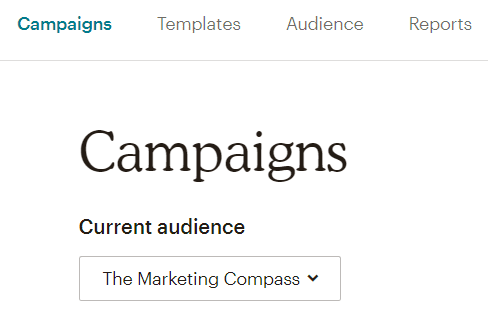

If you want to update contacts that are already in your audience, check the box next to Update any existing contacts.You'll only see this option if you have groups in your audience. Navigate to the Select groups section and check the box next to each group that applies. If your audience has groups, you can import your contacts directly into the group of your choice.Use the Select a status drop-down menu to choose Unsubscribed.Use the Select an audience drop-down to confirm the audience you want to import to.Click Browse and choose the CSV file from your computer.Click the Manage Audience drop-down and choose Import contacts.If you have more than one audience, click the Current audience drop-down and choose the one you want to work with.

To import a suppression list, follow these steps. To learn more about which contacts count toward your monthly plan limit, check out About Your Contacts. Unsubscribed contacts count toward your monthly marketing plan limit if you created your account after May 15, 2019.To mark existing subscribers as unsubscribed, use the bulk unsubscribe tool instead. This suppression list process can't mark existing contacts as unsubscribed or cleaned.Here are some things to know before you begin this process.
#MAILCHIMP AUDIENCE CLEANED HOW TO#
In this article, you'll learn how to set up a suppression list from a CSV, TXT, or Excel file. You'll need to create a separate suppression list for each audience in your account. Find the one that suits your needs best.To protect against accidentally adding invalid stale addresses to your audience, you can import contacts as unsubscribed to create a suppression list.Įach audience in your Mailchimp account is separate from the others, so your suppression list won't be global. Mailchimp’s Cleaned Contacts: If you’re a Mailchimp user, take advantage of their cleaned contacts feature to automatically remove bounced or unsubscribed contacts.ĭiscover the Best Email Clean Up Tool: Explore various email cleaning tools available in the digital greenhouse. Get Help from Email Hygiene Services: If your email garden needs a little extra care, consider using email hygiene services to clean and rejuvenate your list. Clearing them away opens up space for engaged subscribers to flourish. Weeding Out the Unsubscribed: Don’t be afraid to weed out unsubscribed contacts. This green thumb practice allows you to sow personalized emails that resonate with each group. Segmentation: The Art of Tailored Cultivation: Segment your subscribers based on interests and preferences. Verify Email Addresses – Your Soil’s Test: Like a gardener tests their soil, verify your email addresses to ensure a fertile ground for successful deliverability and engagement. Engaged subscribers are more likely to bloom into loyal customers. Nurture Engagement Like a Garden’s Watering: Water your email list with engaging content, exciting offers, and personalized touches. Make it a habit to remove inactive subscribers and outdated addresses to keep your list refreshed and vibrant. Let’s prune, nurture, and cultivate success in your email marketing endeavors!Įmbrace the Magic of Regular Pruning: Just as a well-maintained garden thrives, so does an email list that undergoes regular pruning. Build a captivating email list that connects with your audience like never before. With our expert tips, you’ll navigate the garden of email hygiene effortlessly. In this article, we’ll show you how to cultivate thriving email campaigns by removing the weeds of inactive and irrelevant addresses.

You might wonder, “But how do I even begin cleaning my email list? Picture SmartMail as your loyal sidekick, standing by your side, helping you effortlessly cleanse and maintain your email list in tip-top shape. The key to a flourishing email marketing strategy is a spick-and-span email list, and that’s where the magic of email hygiene comes into play. Trust us you wouldn’t want weeds (read: inactive and irrelevant email addresses) cluttering up your perfectly crafted campaigns, stealing precious resources and undermining your efforts. Imagine your email list as a garden of subscribers, and just like any good gardener, you need to tend to it regularly.


 0 kommentar(er)
0 kommentar(er)
